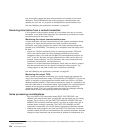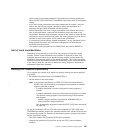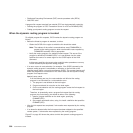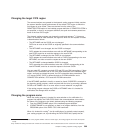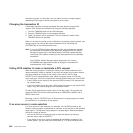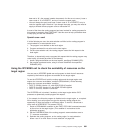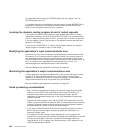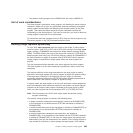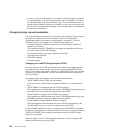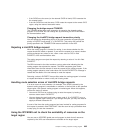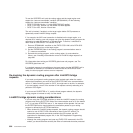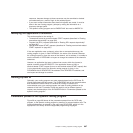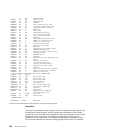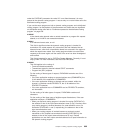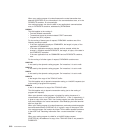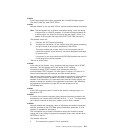v If an error occurs in route selection, for example, if the target region returned by
the routing program on its initial (route selection) call is unavailable. This allows
the routing program to specify an alternate target. This process iterates until the
routing program selects a target that is available, or sets a non-zero return code.
v After the user transaction has completed, if the routing program has requested to
be reinvoked at termination.
Changing bridge request parameters
The communications area passed to the dynamic routing program initially contains
parameters and pointers that you can examine. These are all described in
“Parameters passed to the dynamic routing program” on page 607. The only
parameters that you can change for a Link3270 bridge request are:
v The system identifier (SYSID) and netname of the CICS region to which the
request is to be routed
v The transaction identifier (TRANSID) of the target user application that is to be
run under control of the Link3270 bridge
v The dispatcher priority of the user transaction in the AOR
v A task-local user data area
v DTRTRAN indicators
v Termination option
Changing the Link3270 bridge request SYSID
The initial values of the SYSID and netname of the default CICS region to which
the request is to be routed are derived from the value of the REMOTESYSTEM
option of the installed user program definition. If REMOTESYSTEM is not specified,
or there is no program definition, the sysid and netname passed are those of the
local CICS region.
The region to which the request is routed is determined as follows:
v The NETNAME and the SYSID are not changed.
CICS tries to route to the SYSID as originally specified in the communications
area.
v The NETNAME is not changed, but the SYSID is changed.
CICS updates the communications area with the NETNAME corresponding to the
new SYSID, and tries to route the request to the new SYSID.
v The NETNAME is changed, but the SYSID is not changed.
CICS updates the communications area with a SYSID corresponding to the new
NETNAME, and tries to route the request to the new SYSID.
v The NETNAME is changed and the SYSID is changed.
CICS overwrites the communications area with a SYSID corresponding to the
new NETNAME, and tries to route the request to that new SYSID.
If the NETNAME specified is invalid, or cannot be found, SYSIDERR is returned to
the dynamic routing program—which may deal with the error by returning a different
SYSID or NETNAME—see “Handling route selection errors of Link3270 bridge
requests” on page 605.
When you return control to CICS with return code zero, CICS first compares the
returned SYSID with its own local SYSID:
604 Customization Guide



